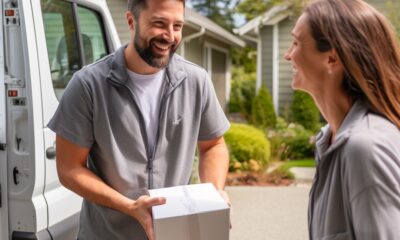Cannabis Business
Social Equity Partners is Available For Arizona Applicants

With the passage of prop 207, legal cannabis sales for recreational purposes become a new norm for Arizona residents. The legal cannabis market is a multi-billion dollar industry with a projected worth of $73 billion globally by 2027. That’s why it is important for local residents of Arizona to look for partnerships that benefit local communities within Arizona instead of foreign corporations.
Social Equity Partners’ mission is to assist Arizona residents who were convicted of non-violent cannabis felonies to apply for adult-use marijuana dispensary and cultivation establishment licenses through the program offered by Social Equity Partners. Their goal is to offer Arizona residents with cannabis convictions extensive support in receiving a license and establishing a cannabis business through the Social Equity Program. The founder Thomas Lopez was convicted in 2001 by the State of Arizona with a felony for marijuana possession. He understands the obstacles of what it takes to have personal and professional growth after a criminal conviction which is why he founded Social Equity Partners.

Under the ELEVATE brand label, one of the services that Social Equity Partners offers is access to their fully conceptualized dispensary. ELEVATE is a boutique dispensary with the aim to modernize and deliver the highest-quality marijuana products, with locations planned for Sunnyslope, Glendale and Tempe. ELEVATE aims to serve the local communities of Arizona as a small independent business that keeps money in the community instead of generating profits for foreign corporations while forgetting about the concerns of the local citizens.
Applicants will receive assistance with developing a broad web presence, social media campaigns, and professional branding once accepted into partnering with Social Equity Partners. They will also have access to their pool of local investors who are local community members looking to provide capital for starting dispensaries that benefit local residents instead of funneling money into corporations.
Social Equity Partners will be there to offer assistance during the application process for Arizona residents who are applying with felony cannabis convictions by helping them complete the application, create a compelling business plan, and verify financial requirements. The goal for Social Equity Partners is to ensure that all funding remains local and stays in the community. With this partnership, they believe that applicants have a chance to positively impact their neighborhoods and take part in reinvigorating local economies with locally-based investors’ support.
With a partnership like Social Equity Partners, applicants will have access to full support from land-use lawyers, Realtors, and permitting specialists to help with identifying a site for your cannabis business. Their real estate brokers and lawyers understand the legal requirements for zoning laws for spaces all over Arizona and will help assist partners with finding the right property for their needs. Their partnership increases the likelihood of eligibility for the Social Equity Ownership Program with their proven funding and business plans already in place.
Medical Disclaimer:
The information provided in these blog posts is intended for general informational and educational purposes only. It is not a substitute for professional medical advice, diagnosis, or treatment. Always seek the advice of your physician or other qualified healthcare provider with any questions you may have regarding a medical condition. The use of any information provided in these blog posts is solely at your own risk. The authors and the website do not recommend or endorse any specific products, treatments, or procedures mentioned. Reliance on any information in these blog posts is solely at your own discretion.
Cannabis Business
Why Visiting a Local Dispensary Is the Best Way to Experience Cannabis in Massachusetts

It starts with a simple drive on a sunny afternoon. You pull up directions for a dispensary near me and find yourself cruising through small-town Massachusetts roads lined with old oaks and weathered barns. The air smells like freedom mixed with curiosity—you’re not sure what to expect, but you’re ready to find something that feels genuine. When you walk through the door, the earthy scent of fresh flower and the quiet hum of conversation instantly tell you this is more than just a store—it’s a community hub for people who appreciate the craft of cannabis.
That’s what visiting a dispensary is all about—connection, discovery, and trust. Whether you’re a longtime enthusiast or a curious newcomer, there’s something special about stepping inside a space where cannabis culture comes alive. Online shopping might be convenient, but no amount of scrolling compares to seeing, smelling, and learning firsthand. Here’s why taking that short drive is always worth it.
You Get Expert Guidance—Not Guesswork
Let’s be honest: choosing cannabis products online can feel like throwing darts blindfolded. At a dispensary, though, you get to talk to real people who actually know their craft. Budtenders aren’t just employees—they’re cannabis educators. They’ve seen what works for different lifestyles, moods, and tolerance levels. They can help you pick the right flower strain, concentrate, or edible without the trial-and-error that often wastes both time and money.
Plus, they listen. Whether you want something relaxing for evenings, energizing for creativity, or balanced for focus, dispensary staff are there to help you find that perfect fit. And because they hear feedback from customers daily, their recommendations come from real experiences, not marketing jargon.

Freshness, Flavor, and Full Transparency
Buying cannabis from a licensed dispensary means every product has been tested for quality, safety, and potency. That means no hidden ingredients, no questionable growing methods—just clean, reliable cannabis. You can see where it came from, how it was grown, and what makes it special.
Dispensaries often highlight local cultivators that take pride in sustainable farming practices. For example, a cannabis farm based in Massachusetts like Regenerative focuses on sun-grown plants cultivated in living soil, creating products rich in terpenes and flavor without the environmental toll of indoor grows. When you shop local, you’re not just buying cannabis—you’re supporting a movement built on responsibility and respect for the earth.
It’s an Experience, Not Just a Transaction
Walking into a dispensary can feel like entering a coffee shop for the first time—you instantly notice the vibe. Some are bright and modern; others feel cozy and earthy. But what they all share is a sense of community. People aren’t rushing in and out; they’re chatting, asking questions, comparing notes, and discovering new products together.
That face-to-face experience brings a level of trust that online menus can’t replicate. You get to see the flower up close, read the labels, and maybe even catch a whiff of something new that piques your curiosity. It’s the human side of cannabis—where passion meets purpose.
Supporting Local Means Supporting Growth
When you choose a dispensary that sources from local cultivators, your dollars stay in Massachusetts. That’s huge for the local economy. You’re helping independent growers and manufacturers thrive in an industry that often favors big corporations.
Take Regenerative, for instance—a company committed to growing cannabis sustainably while keeping prices fair. Their sun-grown approach cuts energy costs and preserves soil health, allowing them to produce potent, flavorful flower without breaking the bank. Supporting businesses like this keeps the state’s cannabis industry diverse, ethical, and deeply rooted in the community.
Discover What You’ve Been Missing
Let’s face it: cannabis has come a long way. Gone are the days of mystery strains and vague promises. Dispensaries today are places of learning and appreciation. You can explore everything from solventless extracts to terpene-rich flower, each offering its own experience. And because dispensaries rotate their stock, there’s always something new to try.
Think of it like a farmer’s market for cannabis—fresh, seasonal, and grown with care. You walk in with curiosity and walk out with knowledge (and maybe a new favorite product). That sense of discovery keeps people coming back again and again.
Convenience Meets Confidence
Sure, typing “dispensary near me” into Google might be how it starts, but once you find the right one, it becomes part of your routine. Many dispensaries offer online pre-orders for pickup, so you can browse at your own pace and still enjoy the in-person experience. It’s the best of both worlds—convenience with the confidence that comes from knowing exactly what you’re getting.
And there’s something reassuring about buying from a place that stands behind its products. You can ask questions, get honest answers, and feel good about what you’re putting into your body.
Wrapping It Up
The next time you’re tempted to order from an app or drive past your local shop, stop in. Talk to the staff, learn about the products, and feel the energy that comes from people who genuinely care about cannabis. You’ll leave with more than just a product—you’ll leave with knowledge, confidence, and maybe even a new favorite strain grown under the Massachusetts sun.
After all, cannabis is meant to be experienced, not just consumed. So, when was the last time you visited your local dispensary?
Medical Disclaimer:
The information provided in these blog posts is intended for general informational and educational purposes only. It is not a substitute for professional medical advice, diagnosis, or treatment. Always seek the advice of your physician or other qualified healthcare provider with any questions you may have regarding a medical condition. The use of any information provided in these blog posts is solely at your own risk. The authors and the website do not recommend or endorse any specific products, treatments, or procedures mentioned. Reliance on any information in these blog posts is solely at your own discretion.
Cannabis Business
Benefits of Partnering with a Cannabis POS Provider

Medical Disclaimer:
The information provided in these blog posts is intended for general informational and educational purposes only. It is not a substitute for professional medical advice, diagnosis, or treatment. Always seek the advice of your physician or other qualified healthcare provider with any questions you may have regarding a medical condition. The use of any information provided in these blog posts is solely at your own risk. The authors and the website do not recommend or endorse any specific products, treatments, or procedures mentioned. Reliance on any information in these blog posts is solely at your own discretion.
Cannabis Business
Optimizing Your Dispensary Listing for Maximum Visibility
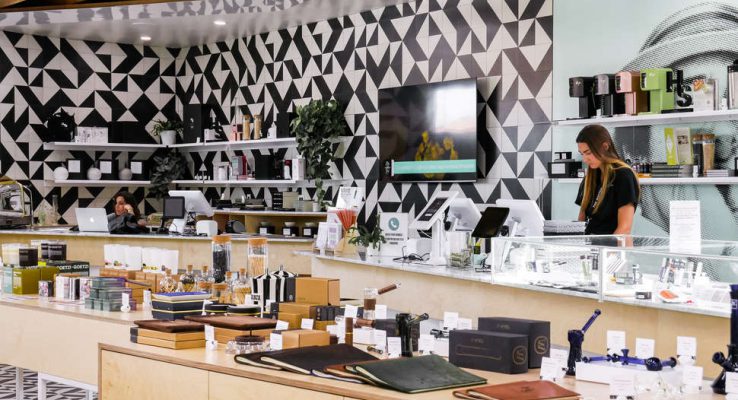
Are you a dispensary owner looking to amplify your online presence and attract more customers without breaking the bank? Look no further than cannabis deal websites, where you can list your weed dispensary and cannabis deals for free, reaching a vast audience of cannabis enthusiasts eager for deals and discounts. In this post, we’ll dive into the art of optimizing your dispensary listing for maximum visibility on these platforms, helping you stand out in the crowded digital landscape.
- Crafting an Eye-Catching Title: Your dispensary’s title is the first thing potential customers see when browsing through listings. Make it attention-grabbing and descriptive, incorporating relevant keywords to improve searchability. Think about what sets your dispensary apart – whether it’s your unique product selection, exceptional customer service, or unbeatable deals – and highlight it in your title.
- Captivating Description: Once you’ve piqued their interest with your title, seal the deal with a compelling description of your dispensary. Keep it concise yet informative, outlining what makes your establishment special and why customers should choose you over the competition. Highlight any exclusive deals or promotions you’re offering to entice visitors to click through to your listing.
- High-Quality Imagery: They say a picture is worth a thousand words, and nowhere is this truer than in the world of online marketing. Upload high-quality images of your dispensary, showcasing your products, interior, and staff members. Make sure the images are well-lit, visually appealing, and accurately represent your brand. Remember, this is your chance to make a great first impression, so invest the time and effort into getting it right.
- Optimizing Keywords: Keywords are the backbone of online search, helping users find relevant content quickly and easily. Identify the keywords and phrases your target audience is likely to use when searching for dispensaries or deals in your area, and incorporate them naturally into your listing. This will improve your visibility on search engine results pages and increase the likelihood of attracting qualified leads to your dispensary.
- Updating Regularly: To keep your dispensary listing fresh and engaging, make sure to update it regularly with new deals, promotions, and announcements. Whether you’re offering a limited-time discount on a popular product or hosting a special event at your dispensary, keep your listing up-to-date to encourage repeat visits and maintain customer interest.
- Encouraging User Interaction: Engage with your audience by encouraging them to leave reviews, ratings, and comments on your dispensary listing. Positive reviews not only build trust and credibility but also improve your ranking on cannabis deals websites, making it easier for potential customers to find you. Respond promptly to any feedback, whether positive or negative, to show that you value your customers’ opinions and are committed to providing excellent service.
- Promoting Across Channels: Don’t limit yourself to just one platform – promote your dispensary listing across multiple channels to reach a wider audience. Share it on your social media profiles, email newsletters, and website to attract visitors from different sources. You can also collaborate with other businesses or influencers in the cannabis industry to cross-promote each other’s listings and expand your reach even further.
In conclusion, optimizing your dispensary listing for maximum visibility on cannabis deals websites is essential for attracting new customers and growing your business. By following these tips and techniques, you can create a compelling listing that stands out from the competition and drives traffic to your dispensary both online and offline. So what are you waiting for? List your weed dispensary and cannabis deals for free today and start reaping the rewards of increased visibility and exposure.
Medical Disclaimer:
The information provided in these blog posts is intended for general informational and educational purposes only. It is not a substitute for professional medical advice, diagnosis, or treatment. Always seek the advice of your physician or other qualified healthcare provider with any questions you may have regarding a medical condition. The use of any information provided in these blog posts is solely at your own risk. The authors and the website do not recommend or endorse any specific products, treatments, or procedures mentioned. Reliance on any information in these blog posts is solely at your own discretion.
Cannabis Business
Convenience at Your Doorstep: The Advantages of Cannabis Delivery Services
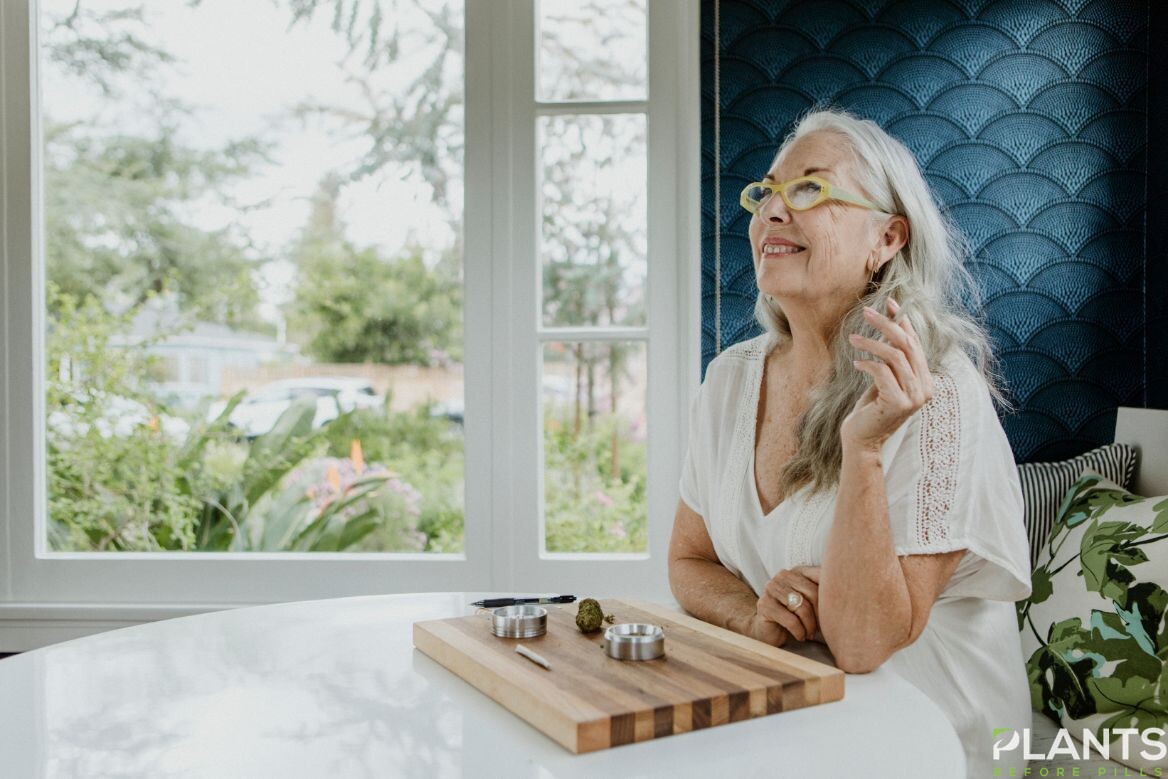
In our fast-paced modern world, convenience has become a prized commodity. From online shopping to food delivery, we are constantly seeking ways to save time and effort. Now, this same convenience has extended to the world of cannabis with the rise of cannabis delivery services. Gone are the days of visiting a dispensary in person; instead, cannabis enthusiasts can now enjoy the benefits of having their favorite products delivered right to their doorstep. In this blog post, we will delve into the advantages of cannabis delivery services and why they have become a game-changer for consumers.
Comfort and Privacy
One of the most significant advantages of cannabis delivery services is the comfort and privacy they offer. Not everyone feels comfortable walking into a physical dispensary, especially those who prefer to keep their cannabis consumption private. With delivery services, individuals can browse and select their products discreetly from the comfort of their own homes. This added privacy ensures a more relaxed and enjoyable shopping experience for both medical patients and recreational users.
Time-Saving
Time is a valuable resource, and cannabis delivery services recognize that. By opting for delivery, customers save the time and effort required to travel to a dispensary, find parking, and navigate through the store. With a few clicks or taps on a smartphone or computer, customers can conveniently browse through a wide range of products, compare prices, and make their selections. The ability to order cannabis online and have it delivered to your door eliminates the need for time-consuming trips, allowing you to focus on other important tasks or simply relax.
Expanded Product Selection
Physical dispensaries often have limited shelf space, which can restrict the variety of products available. On the other hand, cannabis delivery services have the advantage of larger warehouses, enabling them to offer a much wider selection of products. Whether you’re looking for a specific strain, edibles, concentrates, or CBD products, delivery services are more likely to have the exact item you desire. This expansive product selection allows customers to explore new options and find precisely what meets their needs and preferences.
Accessibility for Medical Patients
For individuals using cannabis for medical purposes, accessibility is crucial. Many medical cannabis patients may face mobility challenges or live in areas with limited access to dispensaries. Cannabis delivery services bridge this gap by providing a convenient solution for those who rely on the medicinal benefits of cannabis. Medical patients can easily order their prescribed products and have them delivered directly to their homes, ensuring a continuous supply without the added burden of traveling.
Safety and Discretion
Licensed cannabis delivery services prioritize the safety and well-being of their customers. By operating within the legal framework and adhering to strict regulations, these services ensure that the products they deliver are tested and labeled correctly. Moreover, delivery drivers are trained to handle cannabis products with care, maintaining their potency and quality during transportation. Additionally, discreet packaging further ensures the privacy of customers, with no visible signs indicating the contents of the package.
Conclusion
Cannabis delivery services have revolutionized the way we purchase and enjoy cannabis products. With their numerous advantages, such as comfort, privacy, time-saving, expanded product selection, and enhanced accessibility for medical patients, they have quickly become a preferred choice for many consumers. The convenience of having cannabis delivered right to your doorstep allows for a stress-free and personalized shopping experience, without compromising on quality or safety. Whether you’re a medical patient or a recreational user, cannabis delivery services offer a seamless and enjoyable way to access your favorite products. Embrace the convenience and experience the benefits of cannabis delivery today!
Medical Disclaimer:
The information provided in these blog posts is intended for general informational and educational purposes only. It is not a substitute for professional medical advice, diagnosis, or treatment. Always seek the advice of your physician or other qualified healthcare provider with any questions you may have regarding a medical condition. The use of any information provided in these blog posts is solely at your own risk. The authors and the website do not recommend or endorse any specific products, treatments, or procedures mentioned. Reliance on any information in these blog posts is solely at your own discretion.
Cannabis Business
How a Toronto Cannabis Lawyer Can Assist Your Cannabis Store
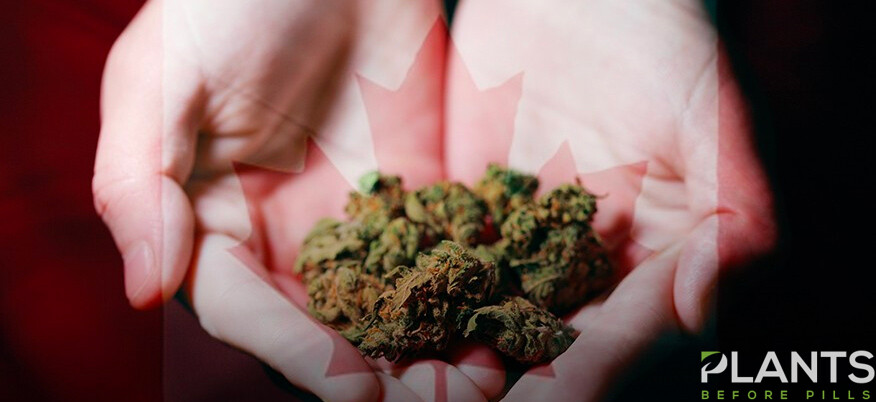
In the burgeoning world of legalized cannabis in Toronto, navigating the legal landscape can be complex. From understanding the nuances of the Cannabis Licence Act to ensuring that your operations are in full compliance with local laws and regulations, owning and operating a cannabis store presents unique legal challenges. This is where a Toronto cannabis lawyer, particularly a cannabis retail lawyer, can be a game-changer.
Cannabis retail lawyers are specialized legal professionals who have an in-depth understanding of cannabis laws, including licensing, retail operations, and compliance with Ontario’s Cannabis Licence Act. This act sets the legal framework for the sale, distribution, and consumption of cannabis in the province, and compliance with this act is non-negotiable for any business in the sector.
A cannabis retail lawyer can provide valuable legal counsel in various ways. One key area is in the licensing process. Obtaining a retail operator license and a retail store authorization in Ontario requires navigating a complex process, with strict application criteria and various ongoing obligations once a license is granted. A cannabis retail lawyer can help you understand these requirements and guide you through the process, significantly increasing the chances of a successful application.
Beyond licensing, a cannabis lawyer can also help ensure your business is fully compliant with the Cannabis Licence Act. This includes everything from store setup to operating procedures, marketing and promotional activities, and more. Ensuring that your cannabis store is compliant can help you avoid legal pitfalls, costly fines, and potential damage to your business reputation.
In a rapidly evolving industry like cannabis, legal regulations can change quickly, and keeping up with these changes is critical for the continued success of your business. A Toronto cannabis lawyer can help you stay informed about any changes to the Cannabis Licence Act or other relevant laws, and advise on how these changes could impact your operations.
In conclusion, navigating the legal landscape of cannabis retail in Toronto can be complex, but with the assistance of a dedicated cannabis retail lawyer, you can ensure that your business is legally sound. Whether you’re just starting out in the cannabis industry or looking to ensure your established business stays compliant, legal support is invaluable. So, don’t hesitate to seek the help of a lawyer such as Harrison Jordan who can guide you every step of the way.
Medical Disclaimer:
The information provided in these blog posts is intended for general informational and educational purposes only. It is not a substitute for professional medical advice, diagnosis, or treatment. Always seek the advice of your physician or other qualified healthcare provider with any questions you may have regarding a medical condition. The use of any information provided in these blog posts is solely at your own risk. The authors and the website do not recommend or endorse any specific products, treatments, or procedures mentioned. Reliance on any information in these blog posts is solely at your own discretion.
Cannabis Business
Ways To Scale Your Dispensary or Brand To New Heights

As the cannabis industry continues to grow and expand, it’s essential for dispensaries and brands to stay ahead of the curve and find ways to scale their businesses to new heights. Whether you’re just starting out or looking to take your existing operation to the next level, there are a few key strategies you can use to increase your revenue and expand your reach.
- Create a Memorable Customer Experience
One of the most important ways to scale your dispensary or brand is to focus on creating a unique and memorable customer experience. In today’s competitive market, simply offering quality products is not enough to differentiate yourself from other businesses. By investing in your customers and building strong relationships with them, you’ll create a loyal following that will help drive sales and promote your brand through word of mouth.
There are many ways to create a memorable customer experience, including:
- Personalized Product Recommendations: Train your budtenders to ask customers about their preferences and make tailored product recommendations. This will show that you care about their needs and are invested in their experience.
- Host Events and Workshops: By hosting events and workshops, you can create a sense of community around your brand and provide value beyond just selling products. This is an opportunity to educate your customers and showcase your expertise.
- Loyalty Programs: A loyalty program is a great way to reward repeat customers and incentivize them to come back to your dispensary. Offer perks such as exclusive discounts, early access to new products, or free merchandise.
- Explore New Distribution Channels and Partnerships
Another way to scale your business is to explore new distribution channels and partnerships. This might involve working with other dispensaries or retailers to cross-promote your products, or partnering with online platforms to reach a wider audience. By expanding your distribution network, you’ll be able to reach more customers and increase your revenue potential.
Here are a few ideas for expanding your distribution channels:
- Partner with Other Dispensaries: Work with other dispensaries to create a network of businesses that promote each other’s products. This can help you reach new customers and increase your brand’s exposure.
- Distribute through Online Platforms: Many online platforms allow cannabis businesses to sell their products online. This can be a great way to reach customers who don’t live near your physical location.
- Participate in Cannabis Events: Attending and exhibiting at cannabis events can be a great way to meet potential customers and partners. This is also an opportunity to showcase your products and build brand awareness.
- Utilize a Commercial Grade Preroll Machine
One strategy that can help dispensaries increase their potential revenue is to utilize a commercial grade preroll machine like the FLEXPAK 551 Max. These machines are designed to efficiently and consistently roll high-quality pre-rolls at scale, which can save time and labor costs while also improving product quality.
Here are some of the benefits of using a commercial grade preroll machine:
- Consistent Quality: By using a machine to roll your pre-rolls, you can ensure that each one is rolled to the same standard. This can help maintain product quality and consistency, which is important for building trust with customers.
- Increased Efficiency: Rolling pre-rolls by hand can be time-consuming and labor-intensive. By using a machine, you can save time and reduce labor costs, allowing you to focus on other aspects of your business.
- Increased Production Capacity: A preroll machine can roll pre-rolls at a much faster rate than is possible by hand. This can help you increase your production capacity and meet the demands of a growing customer base.
There are several types of commercial grade preroll machines on the market, each with its own unique features and benefits. When choosing a machine, consider factors such as production capacity, ease of use, and the ability to customize pre-rolls with different strains and blends.
- Develop Your Brand and Marketing Strategy
Another key aspect of scaling your dispensary or brand is to develop a strong brand identity and marketing strategy. Your brand should be distinctive and easily recognizable, and your marketing efforts should be targeted towards your ideal customer demographic.
Here are some tips for developing your brand and marketing strategy:
- Define Your Brand Identity: Identify what sets your brand apart from others in the market. This might include your product quality, customer service, or unique packaging and design. Use this to develop a strong brand identity that resonates with your target audience.
- Create Compelling Content: Whether it’s social media posts, blog articles, or email newsletters, create content that provides value to your customers and promotes your brand. This can include educational content about cannabis, product reviews, or behind-the-scenes looks at your business.
- Leverage Social Media: Social media is a powerful tool for building brand awareness and engaging with your customers. Use platforms such as Instagram and Twitter to showcase your products, share educational content, and connect with potential customers.
- Utilize Influencers: Partnering with cannabis influencers can be an effective way to reach a wider audience and build credibility for your brand. Identify influencers whose values align with your brand and work with them to promote your products.
- Measure Your Results: Use analytics tools to measure the effectiveness of your marketing efforts. This will help you identify what’s working and what’s not, and make data-driven decisions to improve your strategy over time.
- Prioritize Compliance and Regulation
As the cannabis industry continues to evolve, it’s essential for businesses to prioritize compliance and regulation. Ensuring that your dispensary or brand is operating in accordance with local laws and regulations is not only important for maintaining your license and reputation, but also for ensuring the safety and well-being of your customers.
Here are some tips for prioritizing compliance and regulation:
- Stay Up-to-Date: Keep up with changes in local and state laws related to cannabis, and ensure that your business is operating in compliance with these laws.
- Invest in Training: Provide your employees with regular training on compliance and regulation, and ensure that they understand the importance of adhering to these standards.
- Maintain Accurate Records: Keep detailed records of all transactions and inventory to ensure that you’re in compliance with regulatory requirements.
- Prioritize Safety: Ensure that all products are tested for quality and safety, and that your dispensary or brand is taking steps to minimize potential risks to customers.
In conclusion, scaling your dispensary or brand to new heights requires a combination of strategic planning, customer-focused initiatives, and a commitment to compliance and regulation. By investing in your brand identity and marketing strategy, exploring new distribution channels, and utilizing tools such as commercial grade preroll machines, you can set your business up for long-term success in the growing cannabis industry.
Medical Disclaimer:
The information provided in these blog posts is intended for general informational and educational purposes only. It is not a substitute for professional medical advice, diagnosis, or treatment. Always seek the advice of your physician or other qualified healthcare provider with any questions you may have regarding a medical condition. The use of any information provided in these blog posts is solely at your own risk. The authors and the website do not recommend or endorse any specific products, treatments, or procedures mentioned. Reliance on any information in these blog posts is solely at your own discretion.
Cannabis Business
RAW Paper’s Announces Details On Their “Golden Ticket” Sweepstakes
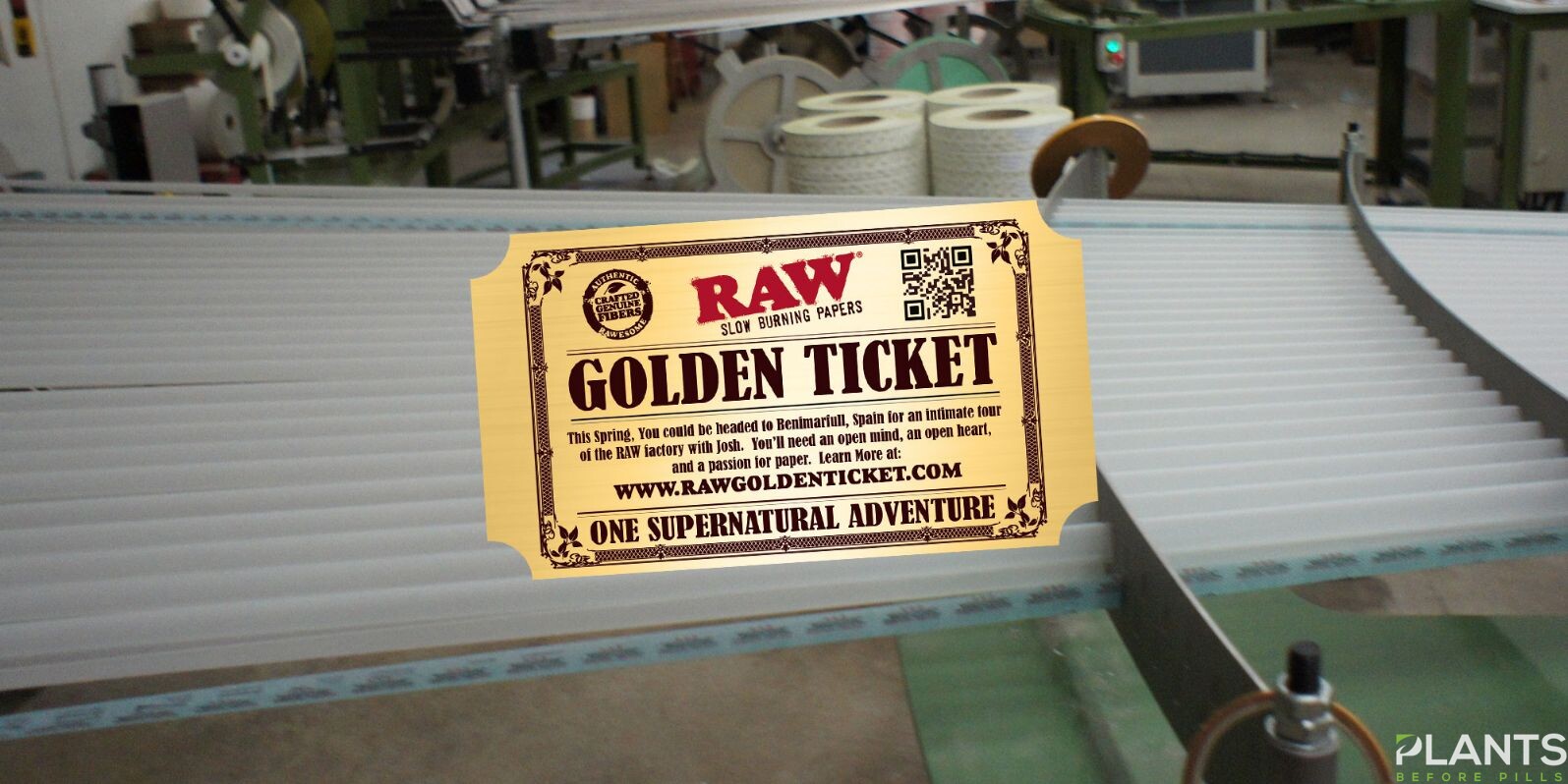
The Golden Ticket sweepstakes page on Rawthentic.com is a promotion where customers can enter for a chance to win a trip to visit the RAW Factory in Benimarfull, Spain and participate in a private tour of the facilities. Please visit the official RAW Golden Ticket Social Media Sweepstakes page for details on how to enter!
About RAW papers
Rolling papers have been around for centuries, and have evolved over time to meet the needs of smokers. Today, there are countless brands of rolling papers available on the market, each with their own unique features and benefits. However, among all of these options, Raw papers stand out as the best rolling papers on the market.
There are a few key reasons why Raw papers are the best option for smokers. First and foremost, Raw papers are made from all-natural, unbleached fibers. This means that they are free of any harmful chemicals or additives that could be harmful to your health. Additionally, Raw papers are vegan-friendly, which is a big plus for those who are conscious of their dietary choices.
Another reason why Raw papers are so popular among smokers is their thinness. Raw papers are incredibly thin, which allows for a smoother smoking experience. When you roll a joint with Raw papers, you don’t have to worry about any extra paper getting in the way of your smoke. This makes for a much cleaner and more enjoyable smoking experience overall.
Raw papers are also very easy to roll with. The thinness of the paper makes it easy to manipulate, and the gum strip is of high quality, ensuring a strong hold. Whether you are an experienced roller or a beginner, Raw papers make it easy to roll a perfect joint every time.
Additionally, Raw papers are incredibly versatile. They come in a variety of sizes, from king-sized papers to smaller ones, making it easy to find the perfect paper for your needs. Raw papers are also available in a variety of flavors, including natural, unflavored papers, as well as flavored papers like grape, strawberry, and more. This makes it easy to customize your smoking experience to your personal preferences.
Finally, Raw papers are very affordable. Despite being made from high-quality, all-natural materials, Raw papers are very reasonably priced, making them accessible to everyone. This is especially important for those who smoke frequently, as the cost of rolling papers can quickly add up over time.
Overall, there are many reasons why Raw papers are the best rolling papers on the market. From their all-natural materials to their thinness and versatility, Raw papers offer a superior smoking experience that is unmatched by any other brand. If you are a smoker who is looking for the best possible rolling papers, Raw papers are the way to go. Give them a try and experience the difference for yourself!
Medical Disclaimer:
The information provided in these blog posts is intended for general informational and educational purposes only. It is not a substitute for professional medical advice, diagnosis, or treatment. Always seek the advice of your physician or other qualified healthcare provider with any questions you may have regarding a medical condition. The use of any information provided in these blog posts is solely at your own risk. The authors and the website do not recommend or endorse any specific products, treatments, or procedures mentioned. Reliance on any information in these blog posts is solely at your own discretion.
Cannabis Business
Things To Consider When Buying A Dispensary

When buying a dispensary, there are many vital factors to consider. The location of the dispensary, the amount of foot traffic, and whether or not the location has a parking lot can all be essential components in determining how much revenue a dispensary will generate. In order to ensure that your business is profitable and successful, you need to ensure that your store has an attractive interior design and exterior signage that attracts customers immediately.
In this post, we will discuss some of the critical aspects to consider before you decide to buy a dispensary.
What does it mean to own a dispensary?
The first thing you should know about buying a dispensary is that you’ll be taking on a lot of responsibility. When you own your own business, you are responsible for the day-to-day operations and must hire and fire employees, manage the inventory, and handle customer service issues. If you don’t have experience with all of these things, it may be helpful to work at another dispensary before purchasing one of your own.
It is vital to do research before buying a business.
Once you have an idea about what’s going on in your market, the next step is finding out whether buying a dispensary will be profitable for you. Before diving into the world of cannabis, it is crucial to do the proper research. Research is critical when buying any business, but especially in this industry. This is because there are so many factors that can affect the success or failure of your dispensary. To help you navigate these waters, we’ve put together a list of things to consider when buying a dispensary (and some resources to help).
- Research the market: How large is the population? Are they willing to embrace recreational marijuana? What other dispensaries are there? Who are they competing with?
- Research the competition: Do they have a brand identity that makes them stand out from other companies in their area? If so, how did they establish such a presence, and what can you learn from that strategy for yourself? What do other dispensaries do well, and where could you improve upon their model if given an opportunity to take over one day (which will happen sooner than later)?
- Research regulatory environment: Does your state require licensing fees or taxes on businesses like yours? If so, how much will those cost each year going forward?
What is the cost of buying and owning a dispensary?
The cost of buying and owning a dispensary is another factor to consider before you buy a dispensary. You’ll also want to consider the cost of hiring employees, marketing and advertising, compliance with state regulations, and supply purchases.
Here’s how some costs break down:
- The cost of buying your own building or space is an important consideration, as it can add up quickly if you don’t have enough capital saved up yourself. A location may cost $100K or more; this amount could include construction costs, equipment installation charges, and permit fees (if applicable).
- Another significant expense is paying for labor resources such as managers who oversee operations on site and security guards who protect against theft or other types of crime occurring at night when customers aren’t present during closed hours.
Conclusion
In conclusion, we can see that buying a business has many challenges. It is important to do research before buying a business and make sure it is worth the investment. You need to consider the cost of buying and owning a dispensary as well as what it means to own one. The last thing you want is regret after investing so much money into something that doesn’t work out as planned.
Medical Disclaimer:
The information provided in these blog posts is intended for general informational and educational purposes only. It is not a substitute for professional medical advice, diagnosis, or treatment. Always seek the advice of your physician or other qualified healthcare provider with any questions you may have regarding a medical condition. The use of any information provided in these blog posts is solely at your own risk. The authors and the website do not recommend or endorse any specific products, treatments, or procedures mentioned. Reliance on any information in these blog posts is solely at your own discretion.
Cannabis 101
The Growth of the Cannabis Industry in 2022 [VIDEO]
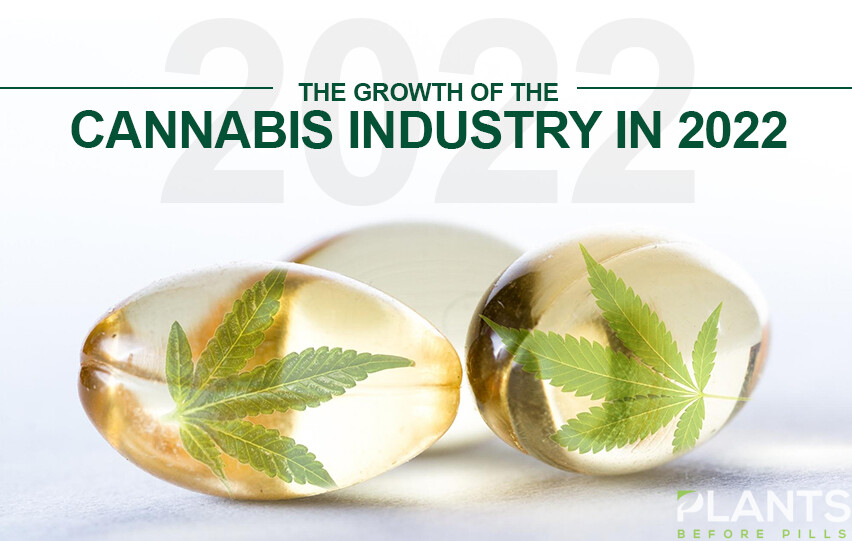
Municipalities in Western New York now have to decide whether or not they will permit cannabis sales and consumption sites. Though there are municipalities that are now decided, there are still 13 places in Erie County and 5 municipalities in Niagara County that are still undecided.
However, with huge numbers of municipalities that opt out of the legalization of the sale and consumption of cannabis, many businesses are in muddy water. Watch this video for more details.
Medical Disclaimer:
The information provided in these blog posts is intended for general informational and educational purposes only. It is not a substitute for professional medical advice, diagnosis, or treatment. Always seek the advice of your physician or other qualified healthcare provider with any questions you may have regarding a medical condition. The use of any information provided in these blog posts is solely at your own risk. The authors and the website do not recommend or endorse any specific products, treatments, or procedures mentioned. Reliance on any information in these blog posts is solely at your own discretion.
Cannabis 101
California Cannabis Businesses Fear State’s Legal Industry Could Collapse [VIDEO]

California has been among the states that allowed the sales of cannabis. However, the industry in the state is experiencing drastic changes that cause businesses to fear legal industry collapse.
Many cannabis entrepreneurs are seeing illicit cannabis transactions and huge taxes as the two main causes of these dramatic changes in the industry. Watch this video to learn more!
Medical Disclaimer:
The information provided in these blog posts is intended for general informational and educational purposes only. It is not a substitute for professional medical advice, diagnosis, or treatment. Always seek the advice of your physician or other qualified healthcare provider with any questions you may have regarding a medical condition. The use of any information provided in these blog posts is solely at your own risk. The authors and the website do not recommend or endorse any specific products, treatments, or procedures mentioned. Reliance on any information in these blog posts is solely at your own discretion.
-

 Cannabis 1014 months ago
Cannabis 1014 months agoExploring the Powerful Profile of Sour Diesel Terpenes: Aroma, Effects, and Uses
-

 Videos4 months ago
Videos4 months agoLive Resin Explained: A Potent Cannabis Extract Guide
-

 Cannabis 1014 months ago
Cannabis 1014 months agoWhere to Find the Best Weed Stores in Calgary Without the Headache
-

 Cannabis 1014 months ago
Cannabis 1014 months agoThe Future of vape hardware manufacturer: Innovation Quality and Compliance
-

 General3 months ago
General3 months agoIntroduction to Buying Marijuana Seeds
-
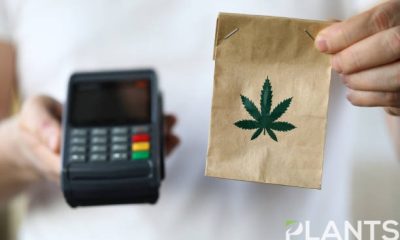
 Cannabis Business4 months ago
Cannabis Business4 months agoBenefits of Partnering with a Cannabis POS Provider
-
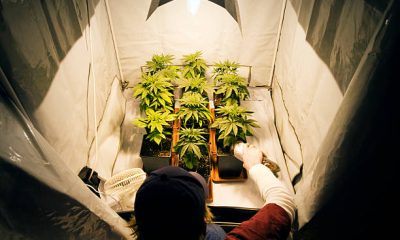
 Cannabis 1013 months ago
Cannabis 1013 months agoThe Complete Guide to Growing Marijuana Tohumsuz
-

 Videos4 months ago
Videos4 months agoSame Day Weed Delivery Surrey: Fast, and Discreet Cannabis

